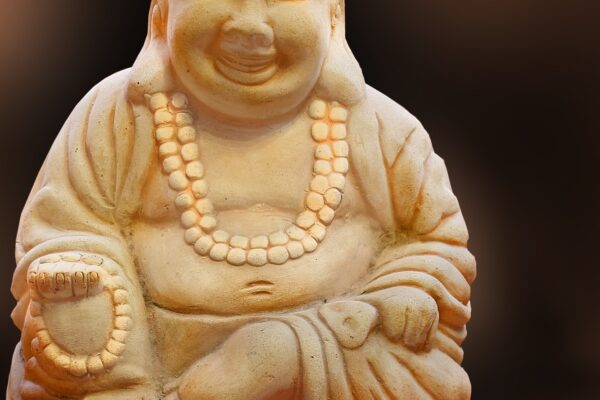
Tag: Laughing buddha

7 Unknown Secrets of Laughing Buddha: How to Use His Energy for Wealth and Well-being”
The Laughing Buddha: Symbolism, History, and How to Invite Prosperity into Your Life The Laughing Buddha, also known as “Budai” or “Hotei” in Chinese and Japanese traditions, is a beloved figure symbolizing happiness, abundance, and good fortune. With his joyful expression and round belly, he stands as an icon of positivity in homes, businesses, and spiritual spaces across the world. But who exactly is the Laughing Buddha, and why is he so widely cherished? In this article, we’ll explore the origins of the Laughing Buddha, his symbolism, and the ways to bring his joyful energy into your life. 1. Who is the Laughing Buddha? Origins and Legend The Laughing Buddha is not to be confused with Siddhartha Gautama, the founder of Buddhism. Instead, he is often identified as a monk named Budai (Hotei in Japan) who lived during the 10th century in China. Known for his eccentric personality, Budai was loved by the people for his cheerful disposition, generosity, and wisdom. His image is usually that of a portly, bald monk with a big smile and a large belly—a symbol of contentment and abundance. According to legend, Budai was a wandering monk who carried a cloth sack filled with gifts and sweets for children, symbolizing his role as a bringer of happiness. Over time, his image evolved, and he became associated with the Maitreya, the “future Buddha” who is prophesied to bring enlightenment and peace. Today, the Laughing Buddha is celebrated as a symbol of joy, wealth, and success. 2. Symbolism of the Laughing Buddha The Laughing Buddha is laden with symbols that represent different forms of abundance and well-being: 3. Different Forms and Meanings of the Laughing Buddha The Laughing Buddha can be depicted in various poses and with different objects, each carrying a unique meaning: 4. Using the Laughing Buddha in Feng Shui In Feng Shui, the Laughing Buddha is a popular symbol for attracting positive energy and good fortune. Here are some tips on placing the Laughing Buddha in your home or workspace: 5. How to Choose Your Laughing Buddha Choosing the right Laughing Buddha for your space depends on your personal goals. Whether you are looking for joy, financial success, or inner peace, there is likely a specific representation of the Laughing Buddha that aligns with your intentions: 6. Myths and Beliefs Surrounding the Laughing Buddha The Laughing Buddha is steeped in numerous myths and beliefs that add to his mystique: These myths reinforce the Laughing Buddha’s role as a bringer of good fortune and as a reminder to live with joy, gratitude, and kindness. 7. Incorporating the Laughing Buddha into Daily Life Beyond being a decorative piece, the Laughing Buddha serves as a spiritual and motivational symbol: Conclusion The Laughing Buddha is much more than a cheerful figure; he represents a lifestyle of joy, resilience, and gratitude. Bringing a Laughing Buddha into your space can be a powerful reminder to focus on the positive, stay grounded in happiness, and appreciate life’s blessings. Whether you seek good fortune, family happiness, or inner peace, the Laughing Buddha is a beautiful symbol of abundance and a powerful tool for mindfulness and positivity.















